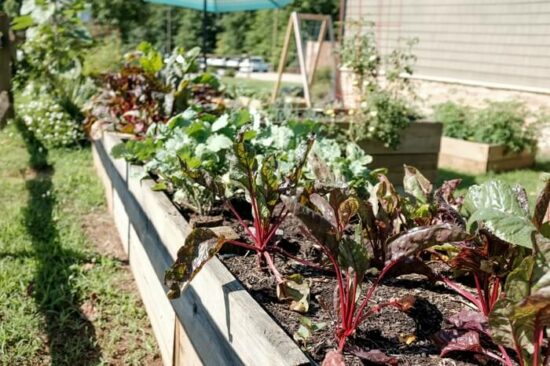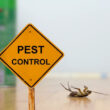Finding organic and natural forms of pest control for your garden can seem a bit tricky at first. It seems like the gardening aisle is always full of chemical-rich products!
This list goes over the most effective forms of natural pest control for your garden. If you give them a try, you’ll definitely notice a difference.
Table of contents
1. Attract Good Garden Bugs
As a gardener, you want to get rid of aphids, spider mites, whiteflies, and any other pest that likes to feed on your precious plants. While most automatically assume that any creepy crawly they find on plant leaves are bad, that’s not the case!
Many common insects will benefit your garden and keep the unwanted pests out. Good garden bugs include ladybugs, ground beetles, praying mantises, lacewings, hoverflies, and more. All of these insects have a lot to offer.
Ladybugs are those cute, hard-shelled insects with iconic polka-dotted bodies. You might see them flying around leaves and blooms. Believe it or not, ladybugs can eat hundreds of aphids a day!
Quick Tip: Aphids are notorious for damaging plant tissue and spreading diseases. Having ladybugs around will keep the population under control.
Lacewings like to eat aphids as well. However, they can also eat many other pests. The larvae, in particular, have a healthy appetite for mealybugs, caterpillars, whiteflies, and more. All of those pests can ruin leaves and stems.
Finally, there are the ground bugs. Beetles and other burrowing insects stay out of sight during the day. But come nightfall, these bugs go on the prowl to consume a wide range of pest insects!
Together, these good bugs can do a lot to manage pest populations in a natural way. To attract them into your garden, you’ll need to introduce some of the things they like.
Ladybugs and lacewings are attracted to flowering plants. They can also go for some herbs and ornamental plant species. Meanwhile, ground bugs prefer to be near water. So, you can add a saucer of clean water to the affected area to draw them in.
To create a place where good bugs want to lay eggs, plant some tall leafy plants. Placing leafy plants puts the resulting larvae close to their pest food sources!
2. Grow The Right Plants
The aforementioned plants can work wonders to bring in beneficial bug reinforcements. However, you can also use plants alone to win the war against pests!
Many plant cultivars are natural deterrents (and it’s obviously a completely organic method of protecting your garden). They work in a couple of different ways.
Some give off a particularly intense aroma that drives pests wild. The fragrance isn’t immediately noticeable to us. But to a tiny invader bug, it’s so bad that they’ll want to avoid the area entirely!
Others will produce oils or toxins that kill bad bugs. Either way, they’re a welcome addition to your garden.
Some of the best pest-deterring plants are marigolds, chrysanthemums, alliums, petunias, and nasturtium. Many gardeners like to use these small, flowering plants. Cultivars with larger blooms can work as well.
However, you want plants that are easy enough for good garden bugs to navigate. Bigger flowers and leaves can make that a bit difficult. Fortunately, most of the recommended plants stay at a manageable size.
Not only that, but they’re easy to grow and provide a nice look to your garden area!
Quick Tip: Consider starting new plants regularly. Different pests move into your garden as the seasons change. The goal is to have fresh, mature plants work their magic all year long.
3. Take Advantage Of Composting
If you haven’t started composting yet, now is the time!
Compost is a gardener’s best friend! Not only does it benefit your plants, but it also feeds beneficial bugs. Good bugs love the stuff! Regular soil amendments will support a thriving population of beneficial bugs.
It can take several months for compost to form, so it’s not a quick endeavor. But once you get a good pile or bin started, it can be a long-term solution that continually serves your plants.
Compost is nothing more than decomposed organic matter. You can create compost in a bin or an open pile. Add some dry yard debris, grass clippings, fresh vegetable waste, and any other plant-based organic product.
As microorganisms break the organic matter down into its simplest form, you’re left with nutrient-rich humus that contains everything plants need to thrive. Compost infuses soil with nitrogen, phosphorus, potassium, and more. It’s all of the stuff you get in commercial fertilizers. However, it’s much more potent and natural!
Quick Tip: Do your best to work the compost into the soil! The nutrients will go straight to the plant roots to fortify and protect them.
4. Use Diatomaceous Earth
- Kills fleas, ants, roaches, and more
- Includes powder duster for easy, targeted application
- Works indoors and outdoors, long-lasting when dry
- 100% pure, food-grade, safe around pets and kids
Diatomaceous earth is a natural garden pest control product that people have been using for ages.
It’s a white, powdery substance that’s made from skeletal remains of single-cell algae called diatoms. Some manufacturers may also add things like clay or powdered minerals. However, diatoms are always the star of the show.
The great thing about diatomaceous earth is that it’s completely natural and safe for all plants. There are no chemicals to worry about.
So, how does it control pests? Well, the powder is so fine that it actually suffocates bugs. It plugs respiratory holes and absorbs fats and oils from exoskeletons. The individual particles are also abrasive, causing physical harm to the bug.
Just sprinkle some diatomaceous earth around areas where pests frequent. You can even apply it directly to plant leaves.
There are two things you need to be aware of when using diatomaceous earth:
- Keep in mind that diatomaceous earth isn’t selective. It can kill good bugs just as effectively as it kills bad ones!
- It’s also paramount to wear a mask when you work with the powder as well. The last thing you want to do is breathe it in and harm your lungs!
5. Plant Some Herbs
Like flowering plants, herbs are an all-natural way to keep pests out of the garden!
Culinary-minded gardeners will plant herbs for their intense aroma and taste. While we love how herbs can spice up a meal, the essential oils and fragrances that come from them are a nightmare for pests.
Consider planting some fresh herbs around your garden. Try planting aromatics like:
- Parsley
- Lemongrass
- Lemon balm
- Mint
- Sage
- Dill
- Basil
- Lavender
- Thyme
- Fennel
- Coriander
You can plant them directly into your garden bed. Not only do the plants deter pests, but you can have a constant supply of fresh herbs for cuisine!
If you want some more versatility, you can plant them in pots. Doing so lets you move the herbs around to chase pests away.
6. Use Essential Oils
If utilizing plants and herbs aren’t an option for you, essential oils are the next best thing.
Essential oils are extracted from plants, so they hold the same aromatic and taste properties. You can dilute the oils and create a custom and natural pest-deterring cocktail!
To do that, gather your essential oil of choice. Some of the best for getting rid of pests are:
- Lavender
- Tea Tree
- Citronella
- Rosemary
- Peppermint
Mix the oil with some witch hazel and a few drops of carrier oil. Alternatively, you can use plain water.
Spray the mixture onto the affected area, and you’re good to go! It may take some experimentation to find out which essential oil works best for the pests in your garden.
However, this technique is entirely safe and natural. This means you can continue to experiment without any risks to your health or the health of your plants.
7. Fortify The Garden
If all else fails, you can always fortify your garden with some physical barriers. Pests have to make their way to your plant to harm it. If they can’t get in, those bugs will no longer be an issue!
There are many physical deterrents out there. Pheromone-based traps are available for most pests. Sticky paper and bait traps do a pretty good job of eliminating aphids and flying bugs.
For bugs that like to crawl on the ground, you can use collars. Paper collars are easy to use and create a physical barrier that stops insects from climbing onto the plant.
Floating covers also work well. They utilize large swathes of porous polyester fabric. Covers act as a dome to block most insects from gaining access to your plants.
They work pretty well and can offer other benefits. For example, the covers protect plants from wind and make the growing environment more humid.
Those are just a few of the most popular fortification methods. There are many more out there! Whatever technique you choose, most are safe for the environment and chemical-free.
Conclusion
While they might take a bit more effort, these organic and natural forms of pest control for your garden are all highly effective. As long as you stick with them, you’ll be able to make a dent in your pest problem.
If you have any thoughts or feedback you’d like to send our way, we’re more than happy to hear from you. Just send us a message through our contact page!



